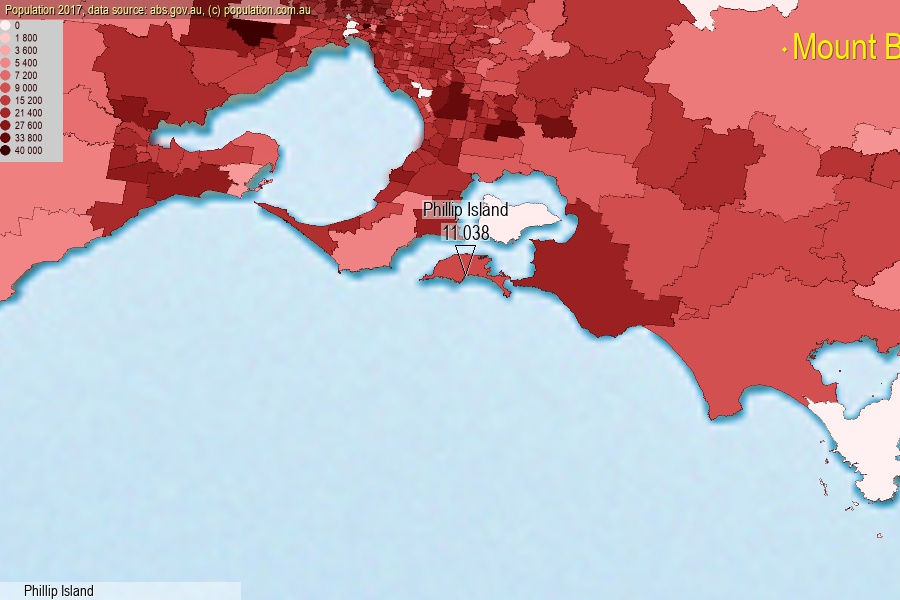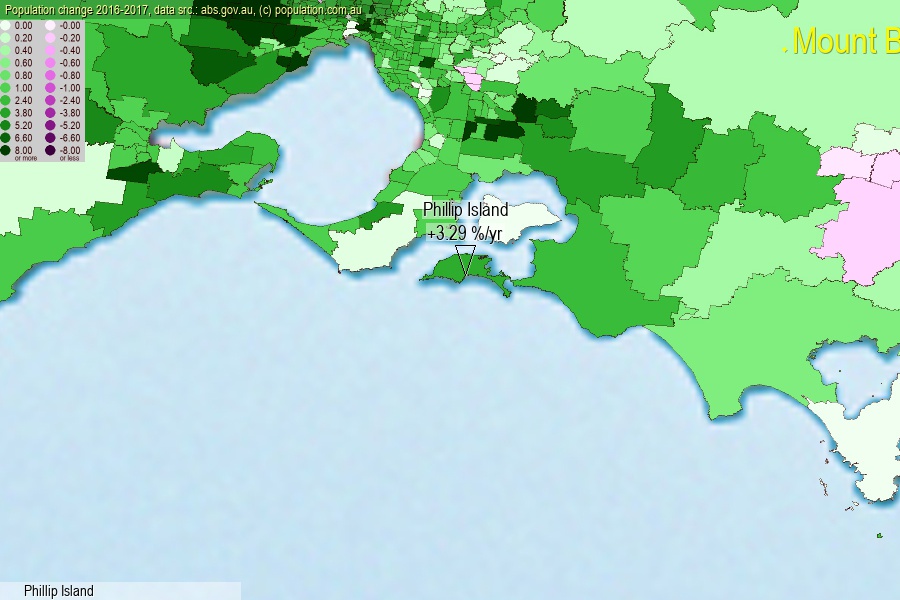 population.com.au
population.com.auLast official estimated population of Phillip Island (as Statistical Area Level 2) was 11 038 people (on 2017-06-30)[2]. This was 0.04% of total Australian population and 0.172% of VIC population. Area of Phillip Island is 100.60 km², in this year population density was 109.72 p/km² . If population growth rate would be same as in period 2016-2017 (+3.29%/yr), Phillip Island population in 2025 would be 14 305. [0]



Click to enlarge. Phillip Island is located in the center of the images.
Population [people], population density [p./km²] and population change [%/year] [2]
View borders » (new window) [4]
[1991-1992] +3.67 %/Yr.
[1992-1993] +2.73 %/Yr.
[1993-1994] +2.55 %/Yr.
[1994-1995] +1.91 %/Yr.
[1995-1996] +2.56 %/Yr.
[1996-1997] +3.75 %/Yr.
[1997-1998] +3.74 %/Yr.
[1998-1999] +3.67 %/Yr.
[1999-2000] +4.79 %/Yr.
[2000-2001] +4.84 %/Yr.
[2001-2002] +3.04 %/Yr.
[2002-2003] +3.34 %/Yr.
[2003-2004] +1.65 %/Yr.
[2004-2005] +3.68 %/Yr.
[2005-2006] +0.52 %/Yr.
[2006-2007] +3.25 %/Yr.
[2007-2008] +3.58 %/Yr.
[2008-2009] +3.52 %/Yr.
[2009-2010] +3.34 %/Yr.
[2010-2011] +1.65 %/Yr.
[2011-2012] +1.50 %/Yr.
[2012-2013] +1.47 %/Yr.
[2013-2014] +1.59 %/Yr.
[2014-2015] +2.28 %/Yr.
[2015-2016] +3.41 %/Yr.
[2016-2017] +3.29 %/Yr.
[0] Calculated with linear interpolation from officially estimated population
[1] Read more about SA2 and Australian Statistical Geography Standard (ASGS) on abs.gov.au
[2] Population data from Australian Bureau of Statistics (Population and density: 2017; change: 2016-2017)
[3] Digital Boundaries: Australian Statistical Geography Standard (ASGS) 2016.
[4] Border coordinates are simplifyed using Ramer-Douglas-Peucker algorithm.